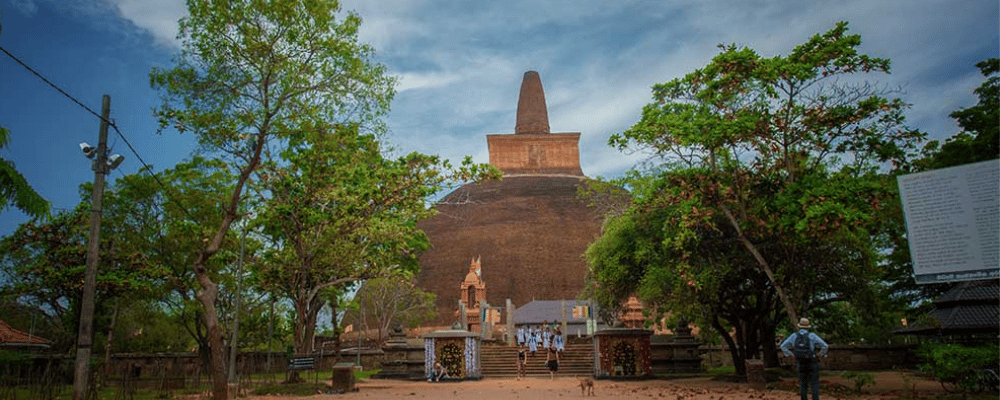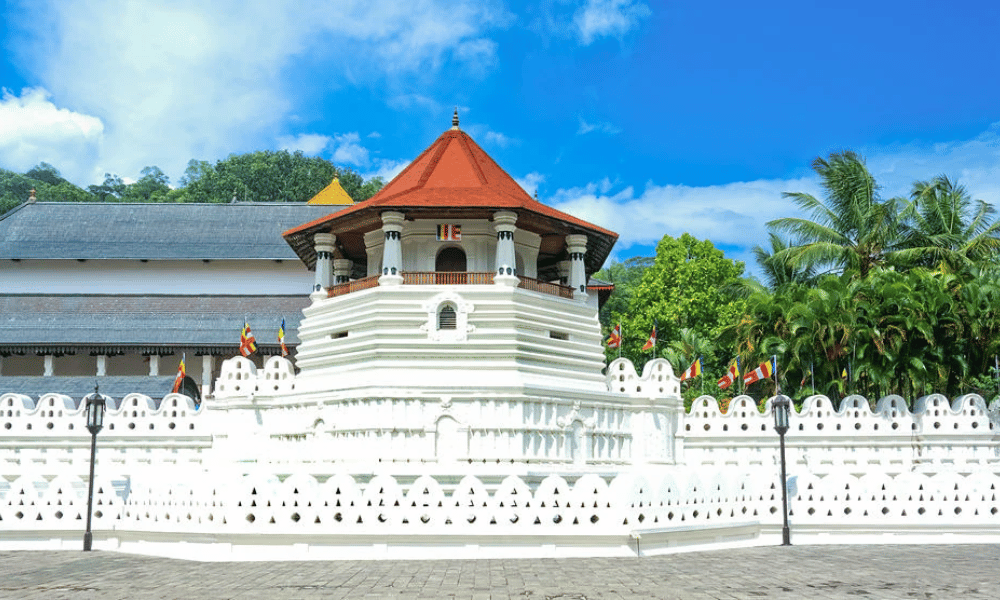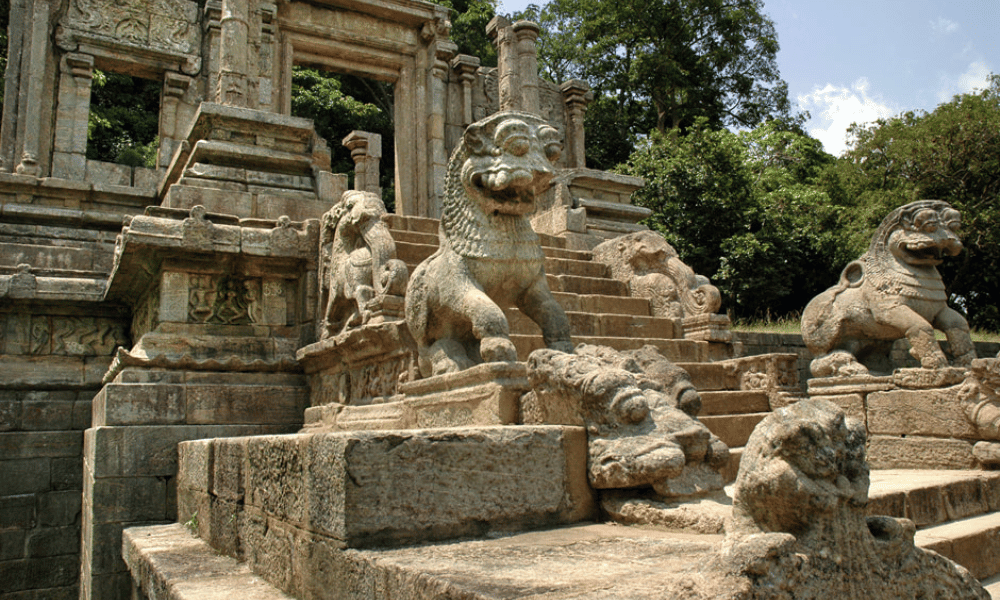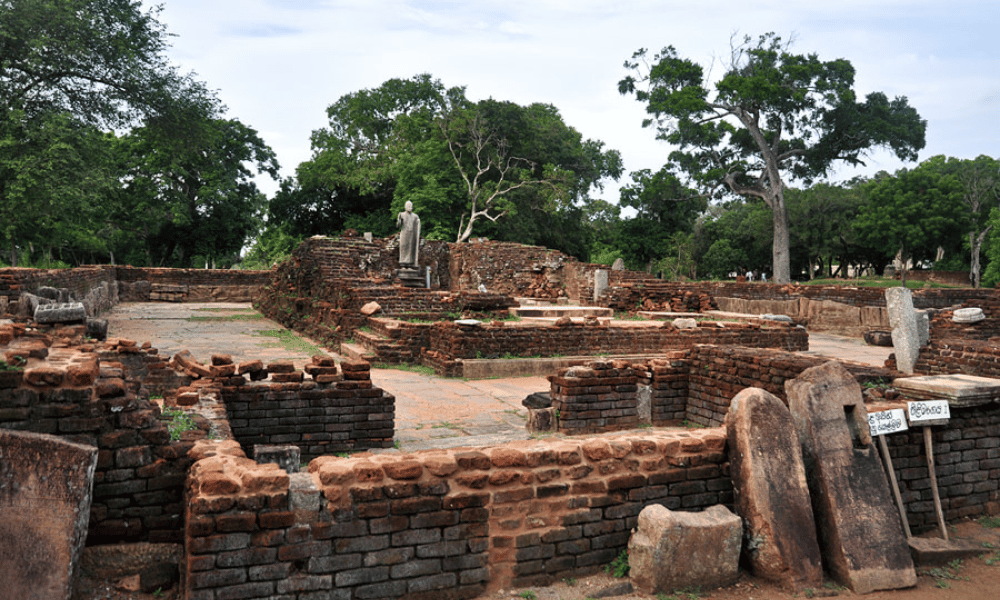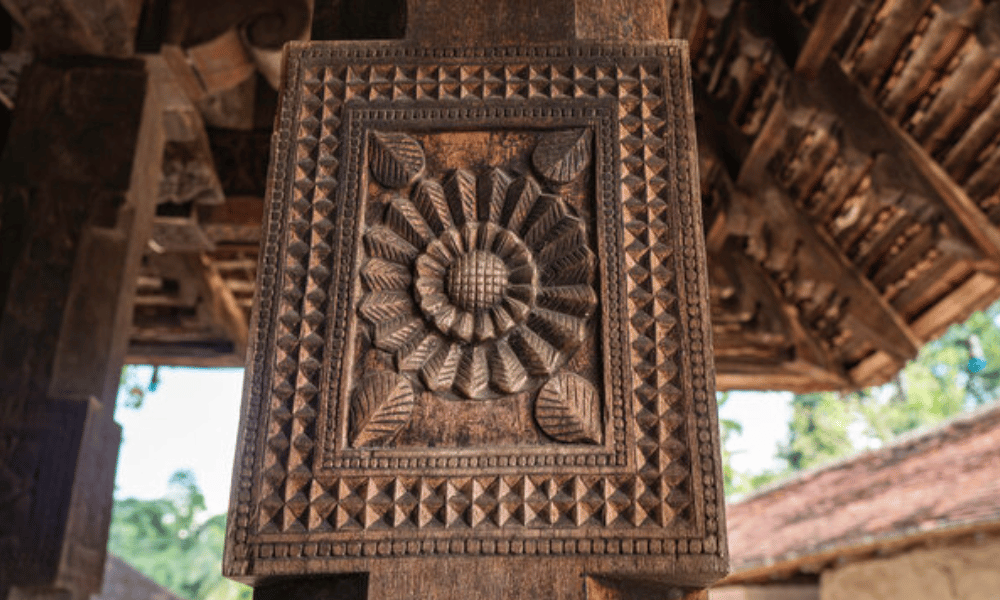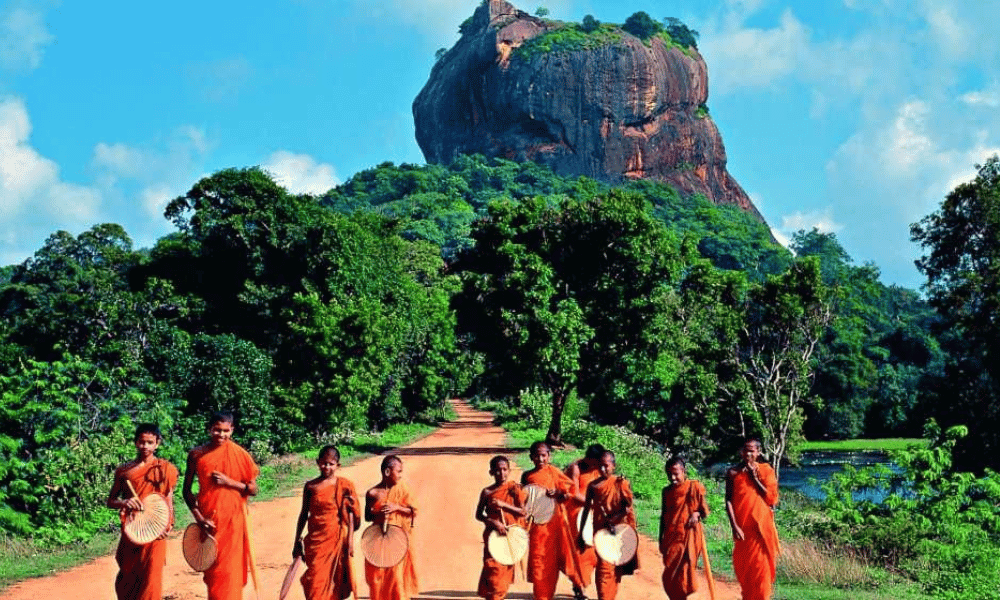Sri Lanka’s Rich Cultural Heritage
The Island country of Sri Lanka in Southeast Asia looks secluded and separate, but it is not. Sri Lanka attracts tourists from all over the world with its many scenic spots and pristine beaches. However, you have yet to discover Sri Lanka’s rich cultural heritage. As an outstanding Buddhist land with traces of human habitation dating back more than 125,000 years, it is one of the most ancient and historic places in the world.
Sri Lanka’s rich cultural heritage: UNESCO World Heritage Sites
Sri Lanka also has many UNESCO World Heritage sites that are historically and culturally significant. The cultural heritage of Sri Lanka is also influenced by neighboring India and colonial rulers such as the British, Dutch, and Arabs and is impressively unique in its preserved ruins, traditions, costumes, food, arts and crafts, etc. This article will provide you with insight into Sri Lanka’s many cultural treasures, including ancient rock-hewn structures that display the ingenuity and artistic skill of their ancestors.
Keep reading to discover the ancient rock architecture of Sri Lanka and the secrets of amazing destinations such as Sigiriya, Dambulla Cave Temple, Polonnaruwa, and more.
Sri Lanka’s ancient stone-carved Architecture
The roots of Sri Lanka’s stone-carved architecture go back thousands of years. Under the influence of neighboring countries and cultures, the artistic form flourished in different periods of the island’s history.
From the early Anuradhapura period to the height of the Sinhalese civilization, rock-cut structures became a prominent feature, reflecting the architectural grandeur of ancient Sri Lanka
Architectural features and techniques
Sri Lankan stone-carved architecture has unique characteristics that set it apart from other ancient architectural styles. The meticulous craftsmanship, intricate carving, and structural design reflect the skill of the artisans who created these marvels. The use of natural rock formations combined with inventive construction techniques resulted in buildings that have stood the test of time.
Sri Lanka’s Rich Cultural Heritage: Sigiriya
Among Sri Lanka’s most iconic rock formations is the awe-inspiring Sigiriya, also known as the Lion Rock Fortress. Sigiriya is proof of the outstanding architectural and artistic skills of ancient Sri Lanka. Rising 660 feet above the surrounding plains, this 5th-century granite monolith was the site of King Kasyapa’s palace. Surrounded by elaborate water gardens, a giant lion carved in stone guards the entrance halfway to the palace.
The paintings portray women conducting religious ceremonies, which are thought to be depictions of Kasyapa’s wives, concubines, or priestesses. Although the identities of the women shown in the frescoes are unknown, these one-of-a-kind antique paintings highlight the beauty of women and have enormous historical value.
Sacred City of Polonnaruwa
About 55 kilometers east of Sigiriya is the ancient capital of Polonnaruwa. It is the second-oldest of Sri Lanka’s kingdoms and one of the best-planned archaeological sites. It is located in a huge complex north of the modern city of Polonnaruwa that contains eight main archaeological sites filled with thousands of statues, ramparts, temples, rotundas, tombs, stupas, and artifacts. This photo shows the royal palace built by the ancient architect of Polonnaruwa, King Parakrambahu the Great.
Only three floors remain, but in its heyday, the palace had seven floors and more than 1,000 rooms. It is believed that large wooden beams were kept in the gaps and recesses of the thick brick walls, while the roof was covered with terracotta tiles. Archaeologists have found evidence that indicates the palace was destroyed by fire before it was abandoned.
The sacred city of Anuradhapura
When we talk about Sri Lanka’s rich cultural heritage, we can’t miss Anuradhapura. The sacred city of Anuradhapura is home to the Sri Maha Bodhi (sacred Bo tree), which grew from the sapling of the very tree from which the Buddha attained enlightenment. In addition, its many Stupas containing Buddha relics are held in deep reverence; Ruwanweli Seya at 338 feet and Jethawanaramya at 400 feet are the most prominent and in the best condition.
Apart from the religious point of view, these are historical places that must be seen because their construction was planned more than 2000 years ago. Finally, a short drive from Anuradhapura is Mihintale, considered the cradle of Buddhism in the country.
Dambulla
Deep in the heart of Sri Lanka lies the magnificent Dambulla Cave Temple, a UNESCO World Heritage Site. This rock-cut sacred complex has five caves decorated with intricate wall paintings and more than 150 statues of Lord Buddha. Immerse yourself in the peaceful atmosphere and witness the fusion of art and spirituality that permeates every corner of this remarkable site.
Cultural significance of ancient architecture
In addition to their architectural beauty, the rock-cut structures of Sri Lanka have deep symbolic and cultural significance. These places were not only places of prayer or residence. They were a gateway to spirituality and a testament to the religious beliefs and cultural heritage of the island. Intricate carvings and murals depict stories from the past, conveying a sense of reverence and spirituality that continues to resonate with visitors.
Temple of the Tooth Relic in Kandy
When exploring Sri Lanka’s rich cultural heritage, the city of Kandy truly shines. The Temple of the Sacred Tooth Relic in Kandy is one of the most sacred Buddhist historical sites not only in Sri Lanka but in the entire world. Named after the tooth relic of the Buddha, the relic is on public display around Kandy Lake every year in July or August.
The Esala Perahera is known for its spectacular light and sound procession, where elephants dress up in regalia, wearing tufted shirts, heralded by traditional dances and performing troupes. Equally large is a similar competition called Navam Perahera, held every February in Colombo.
Galle Fort
Nowhere is the influence of Sri Lanka’s colonial past more evident than in Galle. First occupied by the Portuguese and then by the Dutch, Galle Fort is a well-preserved historical site and almost a page from the history book.
As a World Heritage Site, most of its original architecture has been preserved, and traveling through its narrow streets offers a charming time travel experience.
Adam’s Peak
At 7,359 feet, Adam’s Peak is considered one of the most sacred peaks in Sri Lanka. A popular place of pilgrimage for more than 1000 years has always been the historical Adam’s Peak, which has different names and different origin stories, such as Adam’s Peak (the first place where Adam took the steps sent from heaven to earth), Sri Pada (a Sacred footprint left by Buddha), and Samanalakande (which means Butterfly Hill, the place where butterflies die).
Kelaniya Raja Maha Viharaya
Kelaniya Raja Maha Vihara is one of Sri Lanka’s ancient temples, where the Buddha is said to have made his third visit to the island nation. Built on the water’s edge of the Kelani River, the temple offers beautiful panoramic views of the city below. Dating back to 500 AD, the Kelaniya Raja Maha Vihara is one of Sri Lanka’s amazing historical sites, highlighted by amazing works of art.
The ancient kingdom of Yapahuwa
Yapahuwa was once the capital of the island country. Built in the style of a Sigiriya fortress, Yapahuwa was a palace and a strong military stronghold before an attack by the South Indian Pandyas when they captured the Buddhist Tooth Relic Temple. It was later restored by King Parakramabahu I. Yapahuwa was soon settled and occupied by Buddhists and monks. Look for the castle ruins next to the museum.
Buduruwagala Temple of Lord Buddha
Buduruwagala is an ancient Buddhist temple in Sri Lanka dating back to the 11th century. The temple complex has carved Buddha images, and the most prominent one is 51 feet tall. One of the mysteries surrounding the site is a carving that looks like a flame that produces oil that smells like mustard, for no known source or reason.
Sri Lanka’s rich cultural heritage: Velgam Vehera
Velgam Vehera is one of the oldest Buddhist monasteries in Sri Lanka. It is believed to have been built around 300 BC and is now a popular destination for both Buddhist and Hindu devotees. Although most of the temple is in ruins, one can still find old inscriptions, Sinhalese moonstones, brick dagobas (Sri Lankan stupas), and stone structures scattered around the original site.
Trincomalee is well connected by bus, train, and air to all major cities in the country. From there, you can hire taxis and buses to Velgam Vehera.
Ancient site at Kuchchaveli
Just a short distance from Trincomalee is the ancient site of Kuchchavel. During the excavations, the body of a Buddha statue was found in limestone, made in the style of the magnificent Amaravati statue. A sculpture of 16 dagobas (Sri Lankan stupas) was also found on a nearby hill, leading archaeologists to wonder if the ancient site was a monastery during the Anuradhapura Kingdom era. It is undoubtedly one of the gems of Sri Lanka’s cultural heritage.
Trincomalee is well connected by bus, train, and air to all major cities in the country. From there, you can hire taxis and buses to Velgam Vehera.
Tissamaharama
Tissamaharama is a town in Sri Lanka, better known as the gateway to Yala National Park and the historic town of Kataragama. Tissamaharama was once the capital of the kingdom of Ruhuna. Although many signs of its glorious past are not visible now, some must-sees here include the Tissa Weva Reservoir. This lake was built for irrigation hundreds of years ago and continues to serve the same purpose. It is also a paradise for bird watchers, as many beautiful birds can be seen in the area.
The Santagiri Stupas are also worth seeing. These structures date back to the third century BC and are excellent examples of ancient Sinhalese architecture. Tissamaharama is easily accessible by road. There are several buses on the route, and rental cars are also an option.
Nallur Kandaswamy Kovil
South Indian elements also blend with Sri Lanka’s rich cultural heritage. Jaffna, located in the northernmost part of Sri Lanka, is a city rich in history, culture, and natural beauty. Nallur Kandaswamy Kovil, a significant Hindu temple, is another testament to Jaffna’s historical and cultural heritage.
This vibrant temple, dedicated to Lord Murugan, attracts devotees from all over the island. Its intricate architecture, colorful sculptures, and elaborate festivals, such as the annual Vel Festival, make it a must-visit destination for cultural enthusiasts.
Jaffna archaeological museum
The Jaffna Archaeological Museum is a treasure trove of artifacts that showcase the region’s rich history. From ancient coins to traditional jewelry, the museum offers a glimpse into Jaffna’s past and the cultural significance of its artifacts.
Nagadeepa Purana Vihara, situated on an island off the coast of Jaffna, is a revered Buddhist temple that attracts pilgrims and visitors. According to legend, Lord Buddha visited this sacred site, and the temple stands as a testament to that spiritual connection.
Embekke Devalaya of wood carvings
Embekke Devalaya is a remarkable architectural structure that showcases intricate wood carvings. Embekke Devalaya offers an excellent introduction to ancient Sri Lankan architecture. Various images are carved on the sides of the wooden pillars in Embekke Devalaya. The special feature of these carvings is that each one is different from the others.
Looking at the carvings of the entire Devala complex, there are about 125 decorative sets, 256 festoon-type designs, 64 lotus designs, 30 decorative designs, and ceiling designs. So a total of 514 unique models Embekke Devalaya is a monument of ancient Sri Lankan architecture and art and a popular building worldwide.
Wrapping up
Now that you’ve learned all about Sri Lanka’s rich cultural heritage, the diversity of the small island nation will surely change your mind. With more than 2,500 years of history, the island country has a trove of historical sites waiting to be discovered. From the spread of Buddhism to the colonial past, each era has left an indelible mark on its architecture and culture.
Being one of the first countries that Lord Buddha visited to spread the Dharma, its influence is widely visible in the stupas and statues built in his honor throughout the country. The cultural triangle between the cities of Anuradhapura, Polonnaruwa, and Dambulla is proof of that. Other than that, the cities of Jaffna and Tissamaharama also showcase Sri Lanka’s rich cultural diversity and heritage.
So if you want a holiday full of fun, adventure, excitement, and knowledge of history and culture, Sri Lanka is the place to be!
Follow Us
Sri Lanka Holiday Packages

